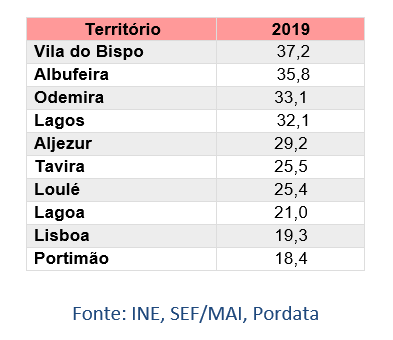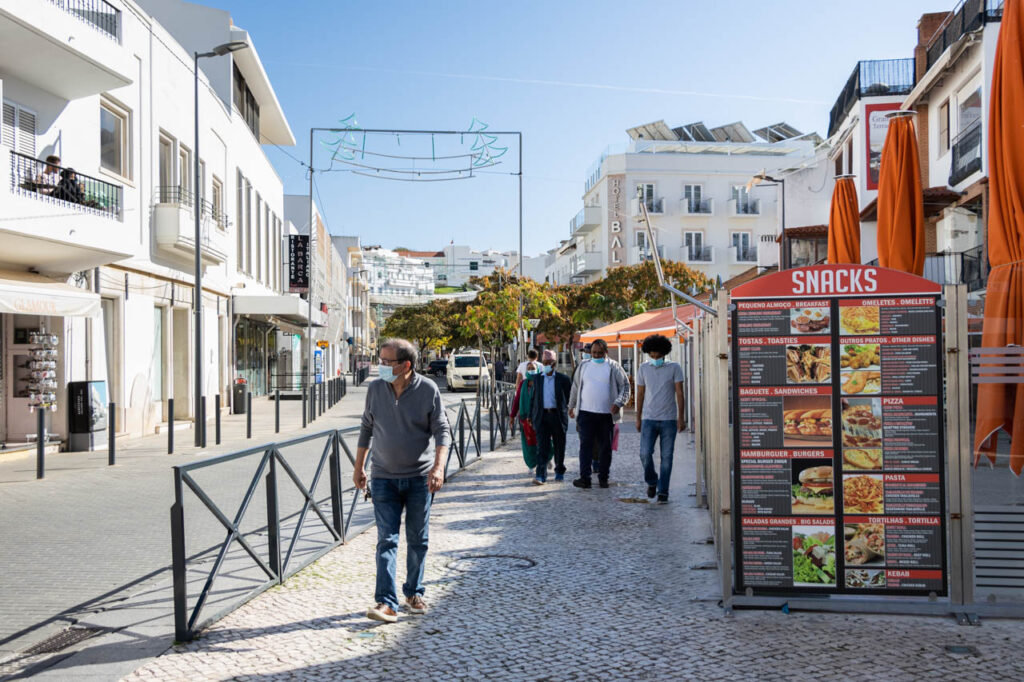Eight of the ten municipalities in the country with the highest proportion of foreigners in the total resident population are from the Algarve. The data was revealed this Friday, by the by date, to mark the International Day of Migration, which marks the 18th of December.
Vila do Bispo, Albufeira, Lagos, Aljezur, Tavira, Loulé, Lagoa and Portimão are Algarve municipalities that are part of this “top 10”, which also includes the municipalities of Odemira and Lisbon.
In the municipality of Vila do Bispo, 37,4% of the resident population, in 2019, had foreign nationality. Albufeira follows with 35,8%.
In third place among the country's municipalities with the highest percentage of foreigners, comes Odemira. In the municipality of Litoral Alentejano, 33,1% of the population with legal resident status is foreign, namely from countries like Nepal, India or Bangladesh. A reality that the Sul Informação already documented in an article.
Lagos appears in fourth place, with 32,1% of foreign residents, and Aljezur appears in fifth place, with 29,2%.
In Tavira and Loulé, one in four residents was not born in Portugal. Tavira has a rate of 25,5% of foreign population and Loulé 25,4%.

With 21% of foreign residents, in eighth position, comes the municipality of Lagoa, followed by Lisbon, which has 19,3% of foreign population.
Closing the “top 10”, yet another municipality in the Algarve: Portimão, with 18,4%. This despite, like the Sul Informação did it work in this infographic, the percentage of foreign population have decreased significantly between 2010 and 2018.
Pordata data released this Friday, International Migration Day, also show that, compared to the national total, 15,7% of foreign residents in Portugal live in the Algarve – many of them already retired – and that only 3% of the employed population in Portugal she is foreign.
Pordata gives as an example the case of Luxembourg, where 54% of the employed population is foreign.
Also according to figures from the Francisco Manuel dos Santos Foundation's statistical database, the foreign population is more vulnerable to unemployment. In 2019, the unemployment rate reached almost 12% of the foreign working population and 6% of the national working population.
In the last ten years, according to Pordata, “the foreign communities that grew the most, in relative terms, were: the Nepalese (25 times more, although the community does not exceed 17 citizens), the Italians (6 times more) and the French (five times more). The Indian community has tripled, while the Spanish, Chinese and British communities have doubled».
Help us to do the Sul Informação!
Contribute your donation so that we can continue to make your journal!
Click here to support us (Paypal)
Or use our IBAN PT50 0018 0003 38929600020 44



















Comments